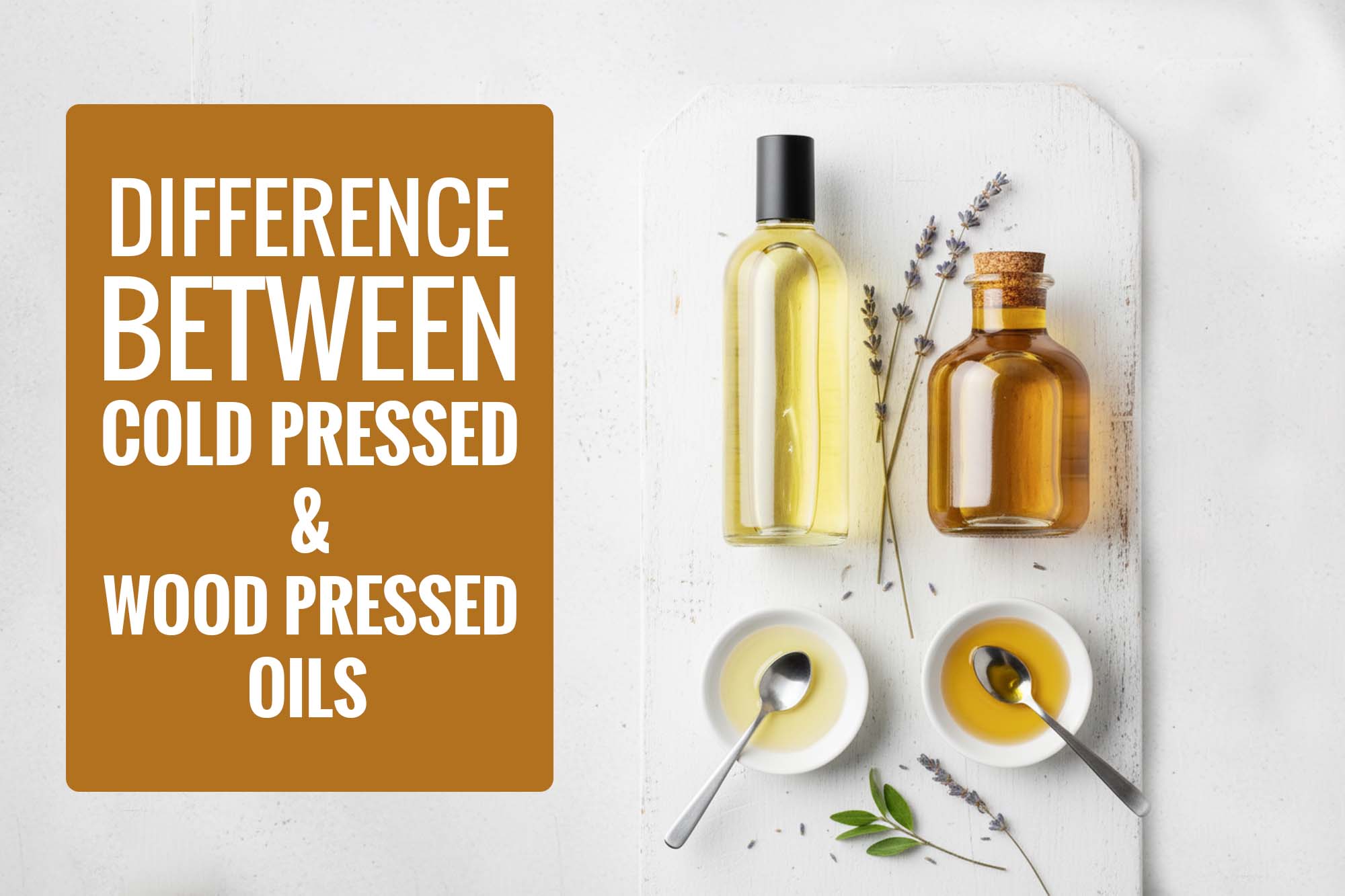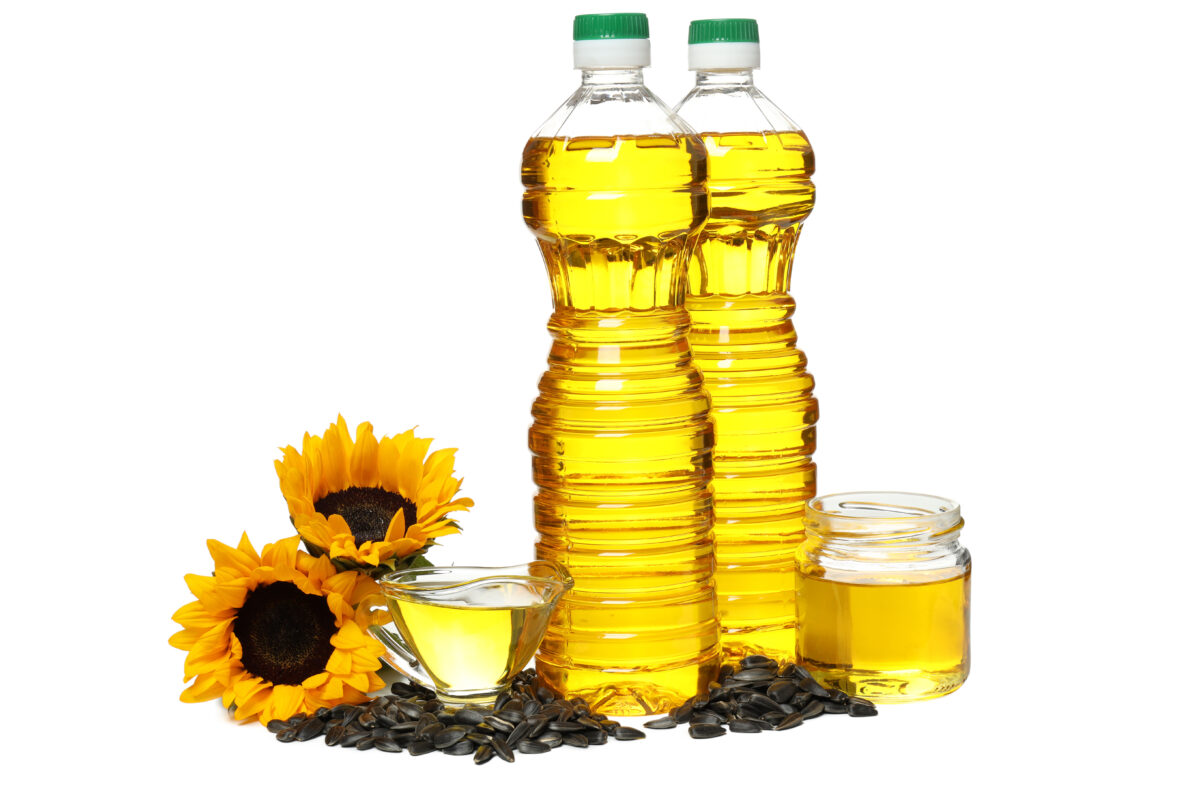Blog
Difference Between Cold Pressed and Wood Pressed Oils

Oil is part of every Indian kitchen. From frying pooris to adding tadka in dal, we use oil every day. But do we know how our oil is made? The way oil is taken out from seeds or nuts changes its quality. Some oils are rich in goodness, while others lose their natural properties due to heat and chemicals.
In this blog, we will learn wood pressed and cold pressed oils difference. We will also see why choosing the right oil is important for our health.
What Do “Cold Pressed” and “Wood Pressed” Mean?
- Cold pressed oil is made by pressing seeds at room temperature. No heat is used. This way, the oil keeps its natural taste, smell, and nutrients.
- This process is also used in producing oil, which is pressed using wood, and the press that crushes the seeds is also made of wood (which is referred to as a wooden Kolhu or Ghani).
So, wood pressed oil is a type of cold pressed oil. Both are natural, both are healthy, but wood pressing is slower and more traditional.
A Short Look at History
Our grandparents and their parents always used wooden Kolhu oils. The Kolhu, run by animals or later by motors, pressed seeds slowly without heat. Oils made this way smelled fresh, stayed thick, and gave strength to the body.
Over time, factories started making refined oils. They used heat and chemicals to make oil clear and cheap. But in this process, the natural goodness was lost. Today, many families are again turning back to cold pressed and wood pressed oils for better health.
How Cold Pressed Oil Is Made?
- Seeds or nuts (like groundnut, sesame, mustard, or coconut) are cleaned.
- They are put in a machine that presses them slowly at room temperature.
- Oil comes out naturally, along with some fine seed particles.
- The oil is left to settle. This is called sedimentation.
- Sometimes, oil is passed through simple cloth or sieves to remove extra particles.
That’s it. No heat, no chemicals, no bleaching. The oil is pure.
How Wood Pressed Oil Is Made?
Wood pressed oil is almost the same as cold pressed oil, but the pressing machine uses a wooden pestle inside a wooden Kolhu.
- The wood does not heat up as much as metal.
- The speed of pressing is very slow.
- This helps the oil stay cool, thick, and full of nutrients.
In villages, people still call it Ghani oil. You may have seen a bull going round and round a wooden Kolhu. That was the old way. Now motors are used, but the method is still the same.
Cold Pressed vs Wood Pressed Oil: Key Differences
| Point | Cold Pressed Oil | Wood Pressed Oil |
| Process | Oil pressed at room temperature | Oil pressed at room temp in wooden Kolhu |
| Machine | Modern steel/motor press | Traditional wooden Kolhu (wooden pestle) |
| Heat | Less heat, but some warmth from metal | Very little heat, wood keeps oil cooler |
| Nutrients | High | Even higher, because almost no heat |
| Taste & Aroma | Natural | Stronger, richer aroma |
| Tradition | Modern method of same process | Old Indian method, used by ancestors |
In short: All wood pressed oils are cold pressed, but not all cold pressed oils are wood pressed.

Why Refined Oils Are Different
It is also important to know what happens with refined oil:
- Seeds are heated to very high temperatures.
- Chemicals are added to clean and bleach the oil.
- Deodorisers remove the natural smell.
- The result: oil looks clear, smells less, and is cheap. But the nutrients are gone. In fact, too much refined oil can harm our health.
Benefits of Cold Pressed and Wood Pressed Oils
1. Full of Nutrients
Since no heat is used, vitamins and minerals remain safe. Oils like sesame, groundnut, or coconut keep their natural goodness.
2. Natural Taste and Smell
You can smell the difference. Cold pressed oils have a raw, nutty aroma. Wood pressed oils smell even fresher and stronger.
3. Good for the Heart
These oils have healthy fats. They help control cholesterol and keep the heart strong.
4. Rich in Antioxidants
Antioxidants fight cell damage. They reduce stress on the body and support healthy skin and hair.
5. Easy to Digest
Because they are pure and natural, they are light on the stomach compared to refined oils.
Uses in Indian Homes
- Cooking: Use groundnut or sesame oil for frying and curries. Mustard oil for pickles and tadka. Coconut oil for South Indian dishes.
- Hair and Skin: Coconut, sesame, and kalonji oils are age-old remedies for strong hair and healthy skin.
- Ayurveda: These oils are used in massage and traditional treatments.
Things to Remember While Buying Natural Oils
- Check the label – It should say cold pressed or wood pressed.
- Look at colour and smell – Pure oil is not always crystal clear. It may look cloudy but that is natural.
- Buy in small quantity – Since no chemicals are used, shelf life is shorter (around 6 months).
- Price – Pure oil is costlier because it takes 2.5–3 kg of seeds to make 1 litre of oil.
- Avoid overheating while cooking – Natural oils should not be heated too much. Use low to medium flame.
Which One Should You Choose?
Both cold pressed and wood pressed oils are healthy. The difference is only in the method. If you want the oil closest to what our ancestors used, choose wood pressed oils. If wood pressed is not available, cold pressed oils are still far better than refined oils.
Expert View
Nutritionists say that our health depends on what we eat daily. Using natural oils is one simple step to keep our body safe. Wooden Kolhu (Ghani) oils were a thousand-year-old Indian trust. Contemporary research also indicates that these oils retain more antioxidants and vitamins than refined oils.
Conclusion
Our health is in our hands. Oil might appear to be a drop in the ocean, but we consume it. With the right oil, we can save our heart, skin as well as our hair. The gift of nature is cold pressed and wood pressed oil. They are chemical free, pure and alive.
Replacing refined oil with natural oil can be a rather insignificant measure in the short term, but it can be of great value in the long-term perspective.
